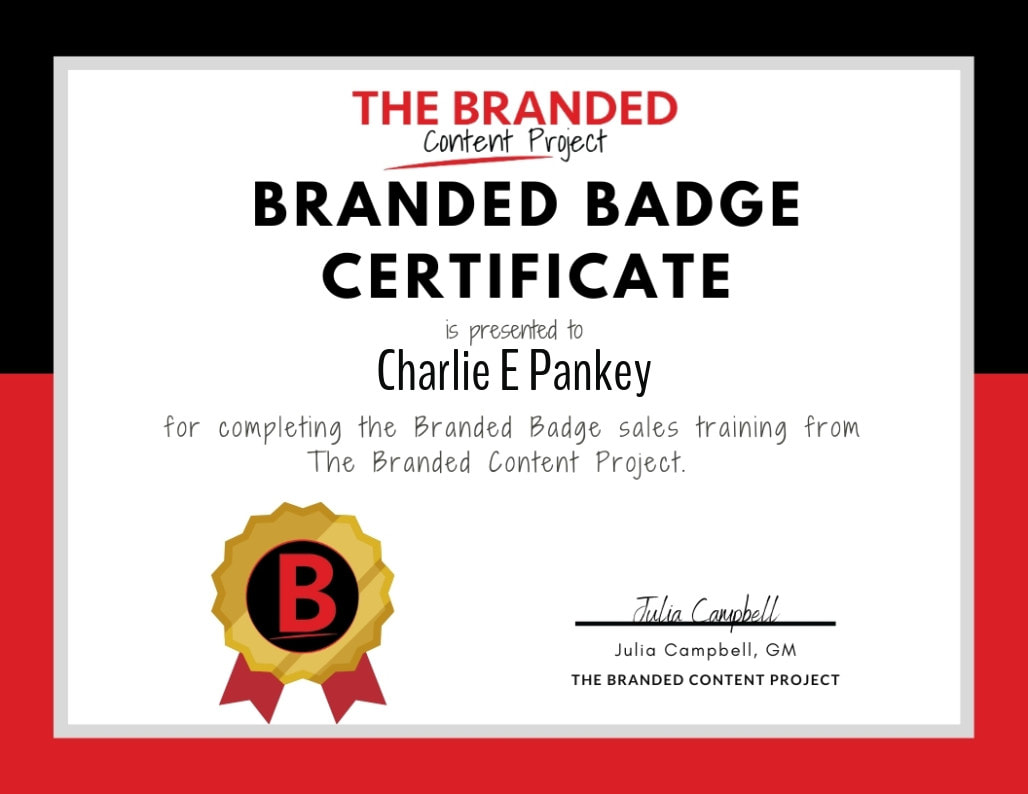Successfully Transition To Your Second Career

Many men and women reach their 50s and 60s and decide the adventure of a new challenge is simply too hard to resist. Oftentimes, this new challenge comes in the form of a second career.
Though the United States Department of Labor notes it's difficult to pinpoint how many career changes the average worker undergoes during his or lifetime, career coaches typically say men and women will undergo between three and seven career changes during their lifetime. Of course, such estimates no doubt include career changes at the onset of a one's professional life, when many people are not precisely sure what they want to do for a living.
For older workers, the uncertainty lies less in what they want to do and more in if they can pull it off. For those who have already decided what they want to do, consider the following tips to help ensure that dream becomes a reality.
* Be patient. Aside from being qualified, the most important thing a person changing careers can be is patient. A successful career change does not happen overnight. Some career changes might require returning to school. Others might not require a new degree, but might require an established professional start from the bottom up. Whatever the situation, it's best to remain patient. If your new career is worth pursuing, be patient enough to see it through.
* Network. Networking is often seen as an opportunity to advance within your own industry. However, networking can be just as valuable when changing careers. People within your network might be able to introduce you to new contacts outside of your industry. These contacts, even if they don't have a job to offer, can often provide valuable insight into the industry you're attempting to enter.
* Volunteer. If your second career is going to be a complete 180 from your current field, it might help to volunteer and gain some experience before beginning a job search. Volunteering can prove beneficial in many ways. First and foremost, it provides potentially valuable experience you likely don't have, and that experience may help down the road when you begin looking for a full-time position.
Another benefit to volunteering is it can provide a genuine look into the industry. This will either strengthen your desire to enter this new field or might encourage you to think more deeply about your pending career change if the field isn't quite what you thought it was going to be.
Finally, volunteering can be a great way to get your foot in the door. Should a position open up, a company is much more likely to consider the man or woman who has been volunteering at the firm than someone they don't know.
* Be flexible. In today's job market, the flexible candidates are more likely to be successful. When changing careers, be as flexible as possible. Determine if relocation is a viable option, and assess your financial situation to determine how much financial flexibility you have. Career changes often come at the expense of a smaller salary. If your financial situation does not allow for a reduction in salary, now might not be the right time to change careers. TF113612
CAPTION: Changing careers is common for men and women over the age of 50.
-------
BUSINESS/CAREER MEN WOMEN LIVING50PLUSMICROSITE HOWTO HOW-TO HOW TO
Though the United States Department of Labor notes it's difficult to pinpoint how many career changes the average worker undergoes during his or lifetime, career coaches typically say men and women will undergo between three and seven career changes during their lifetime. Of course, such estimates no doubt include career changes at the onset of a one's professional life, when many people are not precisely sure what they want to do for a living.
For older workers, the uncertainty lies less in what they want to do and more in if they can pull it off. For those who have already decided what they want to do, consider the following tips to help ensure that dream becomes a reality.
* Be patient. Aside from being qualified, the most important thing a person changing careers can be is patient. A successful career change does not happen overnight. Some career changes might require returning to school. Others might not require a new degree, but might require an established professional start from the bottom up. Whatever the situation, it's best to remain patient. If your new career is worth pursuing, be patient enough to see it through.
* Network. Networking is often seen as an opportunity to advance within your own industry. However, networking can be just as valuable when changing careers. People within your network might be able to introduce you to new contacts outside of your industry. These contacts, even if they don't have a job to offer, can often provide valuable insight into the industry you're attempting to enter.
* Volunteer. If your second career is going to be a complete 180 from your current field, it might help to volunteer and gain some experience before beginning a job search. Volunteering can prove beneficial in many ways. First and foremost, it provides potentially valuable experience you likely don't have, and that experience may help down the road when you begin looking for a full-time position.
Another benefit to volunteering is it can provide a genuine look into the industry. This will either strengthen your desire to enter this new field or might encourage you to think more deeply about your pending career change if the field isn't quite what you thought it was going to be.
Finally, volunteering can be a great way to get your foot in the door. Should a position open up, a company is much more likely to consider the man or woman who has been volunteering at the firm than someone they don't know.
* Be flexible. In today's job market, the flexible candidates are more likely to be successful. When changing careers, be as flexible as possible. Determine if relocation is a viable option, and assess your financial situation to determine how much financial flexibility you have. Career changes often come at the expense of a smaller salary. If your financial situation does not allow for a reduction in salary, now might not be the right time to change careers. TF113612
CAPTION: Changing careers is common for men and women over the age of 50.
-------
BUSINESS/CAREER MEN WOMEN LIVING50PLUSMICROSITE HOWTO HOW-TO HOW TO
Do's and Don'ts of Social Networking When Looking for Work

Do's and Don'ts of Social Networking When Looking for Work Perhaps nothing in the last decade has more revolutionized how people interact than the advent of social networking media. Be it through Facebook or Twitter or their respective counterparts, nowadays more and more people are using the Internet to interact with friends, family and even strangers.
As convenient as such means of communication can be, they can also be risky, particularly for job seekers. In a June 2009 survey, online employment resource CareerBuilder found that 45 percent of employers reported using social media for screening job applicants. Those results came a year after a similar CareerBuilder survey of 31,000 employers found that one-third of applicants considered for jobs were rejected because of information discovered via social media.
While social networking can be valuable when seeking employment, it's best for users to carefully consider just what they're sharing with the world, and what they should probably be keeping to themselves.
Some of the Do's
In many ways, social networking sites can help job seekers as they look for work.
* Do be active. Social networking sites like Facebook aren't just for individuals. In fact, member groups and even university alumni groups have their own Facebook pages. These groups provide valuable means for job seekers to be active, be it with professional groups in their field or among their fellow alumni, which can make for a valuable networking opportunity. What's more, prospective employers who visit an applicant's page are likely to be encouraged by their involvement in local professional groups.
* Do post pertinent information. Job seekers can show their interest in a desired field in other ways as well. Post links to stories about relevant industry topics, just be careful to avoid comments that appear too flippant or critical of the industry or any industry professionals. Posting links indicates to prospective employers that an applicant is up-to-date on current issues facing the industry.
* Do be careful. While job seekers can use social networking sites as a means to display their knowledge of their desired industry, it's important to be careful about how that knowledge is shared. When posting messages, post rational, carefully considered thoughts or opinions. Avoid remarks that might come off as overly critical, instead choosing remarks that provide concise insight and indicate an ability to provide opinion without criticism.
Some of the Don'ts
Ignoring the don'ts of social networking could greatly reduce an applicant's ability to land a job.
* Don't swear like a sailor. Many people avoid swearing in public and it's a good rule of thumb to consider all social networking sites, be it Facebook, LinkedIn or Twitter, a public place. Regardless of where the foul language stems from, it's best to avoid it entirely on social networking sites. Most people would not swear in a job interview, and many of today's job interviews begin with prospective employers researching an applicant online.
* Don't share inappropriate photos. Many a famous person has been caught in scandals surrounding inappropriate photos posted online. While it's OK to horse around with friends, it's best to avoid documenting such times online for all the world, including potential employers, to see.
* Don't get things off your chest with regards to a former employer. Disparaging remarks about a former employer make for a very visible red flag with prospective employers. Such remarks only reflect poorly on the applicant and almost certainly guarantee an individual's resume will find the scrap heap and not the hiring manager's desk.
* Don't get too personal. Sharing too much personal information online is another way job seekers can reduce their chances of finding work. While some information, like family photos, is acceptable, getting overly personal could scare away prospective employers. CB10A922
CAPTION: While it can be fun to use social networking sites, it's best for job seekers to be careful as well.
------
business/career safety/security children/teens technology
As convenient as such means of communication can be, they can also be risky, particularly for job seekers. In a June 2009 survey, online employment resource CareerBuilder found that 45 percent of employers reported using social media for screening job applicants. Those results came a year after a similar CareerBuilder survey of 31,000 employers found that one-third of applicants considered for jobs were rejected because of information discovered via social media.
While social networking can be valuable when seeking employment, it's best for users to carefully consider just what they're sharing with the world, and what they should probably be keeping to themselves.
Some of the Do's
In many ways, social networking sites can help job seekers as they look for work.
* Do be active. Social networking sites like Facebook aren't just for individuals. In fact, member groups and even university alumni groups have their own Facebook pages. These groups provide valuable means for job seekers to be active, be it with professional groups in their field or among their fellow alumni, which can make for a valuable networking opportunity. What's more, prospective employers who visit an applicant's page are likely to be encouraged by their involvement in local professional groups.
* Do post pertinent information. Job seekers can show their interest in a desired field in other ways as well. Post links to stories about relevant industry topics, just be careful to avoid comments that appear too flippant or critical of the industry or any industry professionals. Posting links indicates to prospective employers that an applicant is up-to-date on current issues facing the industry.
* Do be careful. While job seekers can use social networking sites as a means to display their knowledge of their desired industry, it's important to be careful about how that knowledge is shared. When posting messages, post rational, carefully considered thoughts or opinions. Avoid remarks that might come off as overly critical, instead choosing remarks that provide concise insight and indicate an ability to provide opinion without criticism.
Some of the Don'ts
Ignoring the don'ts of social networking could greatly reduce an applicant's ability to land a job.
* Don't swear like a sailor. Many people avoid swearing in public and it's a good rule of thumb to consider all social networking sites, be it Facebook, LinkedIn or Twitter, a public place. Regardless of where the foul language stems from, it's best to avoid it entirely on social networking sites. Most people would not swear in a job interview, and many of today's job interviews begin with prospective employers researching an applicant online.
* Don't share inappropriate photos. Many a famous person has been caught in scandals surrounding inappropriate photos posted online. While it's OK to horse around with friends, it's best to avoid documenting such times online for all the world, including potential employers, to see.
* Don't get things off your chest with regards to a former employer. Disparaging remarks about a former employer make for a very visible red flag with prospective employers. Such remarks only reflect poorly on the applicant and almost certainly guarantee an individual's resume will find the scrap heap and not the hiring manager's desk.
* Don't get too personal. Sharing too much personal information online is another way job seekers can reduce their chances of finding work. While some information, like family photos, is acceptable, getting overly personal could scare away prospective employers. CB10A922
CAPTION: While it can be fun to use social networking sites, it's best for job seekers to be careful as well.
------
business/career safety/security children/teens technology
Resume Tips for Baby Boomers

Resume Tips for Baby Boomers
Be it directly or indirectly, no one has proven immune from the impact of the struggling economy. Children too young to work might have been forced to deal with financial cutbacks their parents made, while those who retired prior to the economic downturn might have seen the value of their investment portfolios dwindle.
Baby Boomers, a term generally used for the generation of people born between the years of 1946 and 1964, who are out of work have discovered a job market where their experience, once such a valuable asset, could actually be considered a disadvantage. Companies looking to cut financial corners might choose less experienced candidates who won't cost as much to compensate. In fact, according to a 2010 bulletin from AARP, more than half of unemployed people age 55-plus were out of work for at least six months. For Boomers still looking for work, the following resume-writing tips could help make you stand out among the masses of applicants.
* Be specific. In such a competitive job market, it can help applicants to be as specific as possible on their resumes. Forgo traditional buzzwords for accomplishments. Note specific quotas met and any specific projects worked on. Today's hiring managers are overwhelmed with applicants and are more likely to remember candidates who tout verifiable accomplishments than those who resort to the same old buzzwords.
* Abandon the rules of yesteryear. Simply put, in such a competitive job market the old rules of resume-writing no longer apply. Conventional wisdom has long recommended keeping resumes short and sweet, limiting them to one page and not going back more than 10 years. Baby Boomers should forget these rules, instead listing any past employment that's relevant to the job, regardless of how long it was. If it takes more than a page to list all relevant details, use as many pages as needed.
* Stay current. Most of today's resumes are submitted electronically. Once submitted, these resumes are included in a database that filters them based on certain terms and keywords. Be sure to include all the current technological terms necessary to perform the job for which you're applying. If you routinely come across job postings for which your technological experience comes up short, start learning and begin including this on your resume.
* Market yourself. Unemployed Baby Boomers need to market themselves effectively. Many will be writing their resumes for the first time in years. When doing so, ask yourself why a prospective company should hire you? Be sure your resume answers this question effectively.
* Include training along with education. Many Baby Boomers likely finished schooling many years ago. However, it can help to include additional professional training you have had over the years. In addition to an "Education" section, include a "Training" section that shows prospective employers that you have kept up-to-date in your field. Certain credentials, such as training in since-outdated computer programs, should be left off the resume, but include any additional training that's current and relevant to the position you're applying for.
Be it directly or indirectly, no one has proven immune from the impact of the struggling economy. Children too young to work might have been forced to deal with financial cutbacks their parents made, while those who retired prior to the economic downturn might have seen the value of their investment portfolios dwindle.
Baby Boomers, a term generally used for the generation of people born between the years of 1946 and 1964, who are out of work have discovered a job market where their experience, once such a valuable asset, could actually be considered a disadvantage. Companies looking to cut financial corners might choose less experienced candidates who won't cost as much to compensate. In fact, according to a 2010 bulletin from AARP, more than half of unemployed people age 55-plus were out of work for at least six months. For Boomers still looking for work, the following resume-writing tips could help make you stand out among the masses of applicants.
* Be specific. In such a competitive job market, it can help applicants to be as specific as possible on their resumes. Forgo traditional buzzwords for accomplishments. Note specific quotas met and any specific projects worked on. Today's hiring managers are overwhelmed with applicants and are more likely to remember candidates who tout verifiable accomplishments than those who resort to the same old buzzwords.
* Abandon the rules of yesteryear. Simply put, in such a competitive job market the old rules of resume-writing no longer apply. Conventional wisdom has long recommended keeping resumes short and sweet, limiting them to one page and not going back more than 10 years. Baby Boomers should forget these rules, instead listing any past employment that's relevant to the job, regardless of how long it was. If it takes more than a page to list all relevant details, use as many pages as needed.
* Stay current. Most of today's resumes are submitted electronically. Once submitted, these resumes are included in a database that filters them based on certain terms and keywords. Be sure to include all the current technological terms necessary to perform the job for which you're applying. If you routinely come across job postings for which your technological experience comes up short, start learning and begin including this on your resume.
* Market yourself. Unemployed Baby Boomers need to market themselves effectively. Many will be writing their resumes for the first time in years. When doing so, ask yourself why a prospective company should hire you? Be sure your resume answers this question effectively.
* Include training along with education. Many Baby Boomers likely finished schooling many years ago. However, it can help to include additional professional training you have had over the years. In addition to an "Education" section, include a "Training" section that shows prospective employers that you have kept up-to-date in your field. Certain credentials, such as training in since-outdated computer programs, should be left off the resume, but include any additional training that's current and relevant to the position you're applying for.
Busy Lifestyle Doesn't Have To Be Unhealthy, Too

Enhance Overall Health the Easy Way
Busy Lifestyle Doesn't Have To Be Unhealthy, Too
(MS) -- Whether it's a byproduct of elevated stress or increasingly busy lifestyles that lead to poor dietary choices, more than 65 million Americans are currently battling digestive health issues. Such issues can make it difficult to break down food while robbing the body of valuable nutrients it needs to stay healthy and fight disease.
While it's easy to identify a digestive problem, many people find such problems far more difficult to address, especially for today's busy, "on the go" lifestyle. But as scientists learn more and more about the gastrointestinal (GI) tract, they're learning that a healthy GI tract is crucial to overall well being. And as hard as it might be for some to believe, improving digestive wellness isn't all that difficult.
"As a health and wellness practitioner, my job is to help people prevent disease and promote a healthy lifestyle," says Doug Holt, CSCS, MFS, founder of Conditioning Specialists (www.conditioningspecialists.com). "Prebiotics stimulate the growth and/or activity of bacteria in the digestive system which are beneficial to the health of the body and are one tool we use to help people restore their health. The introduction of prebiotics and probiotics into the diet helps fuel the healthy bacteria that aid in digestion and absorption."
Developed to conveniently deliver a healthy digestive boost at any time of the day, PRE Probiotic Enhancer fuses organic juice with a proprietary prebiotic blend developed by Jarrow Formulas. The result is a low-calorie beverage alternative that supports digestive health and a stronger immune system.
"The PRE prebiotic beverage was developed to conveniently deliver a healthy digestive boost for everyone from kids to boomers," says Scot De Lorme, Brand Creator. "PRE actively works with the body to promote healthy digestive balance by triggering the growth of beneficial bacteria called probiotics already present in the digestive tract. As the good bacteria increase, so does resistance to harmful bacteria, causing a boost to one's immune system."
Busy, always on-the-go professionals, athletes, and moms alike will also love the PRE Powder Synbiotic Drink mix. Each .25-ounce packet can fit easily into a pocket or pocketbook, and is conveniently designed to be added to water or a favorite cold beverage, making it an ideal way to improve digestive health no matter where you are, be it the office, the kids' soccer game, or on the way to an important meeting. What's more, because it's available in a host of delicious flavors, including Pomegranate Yumberry, Pomegranate Blueberry, Acai Acerola and Passion Orange Guava, it can make a refreshing, not to mention healthy, addition to your workday.
"Introducing prebiotics into the diet can feed good bacteria that protect the body from attack, thus allowing your system to recover quicker and enabling you to enhance your wellbeing," explains Holt. "PRE makes integrating prebiotics and probiotics an easy and delicious part of a lifestyle of wellness."
In addition to the great taste of PRE Regular's Pomegranate Blueberry, Passion Orange Guava or Acai Acerola flavors, PRE Regular is only 50 calories and sweetened with organic cane sugar making it a delectable low-calorie alternative to sugary sports drinks for those on their way to the gym or even for moms en route to a play date or soccer game.
In addition to PRE Regular, PRE 10 is only 10 calories per serving and sweetened with organic cane sugar and stevia, a blessing to those who find it difficult to get their healthy boost from pills.
"I'm vegan and I have a tough time taking pills," says Paulina of Phoenix, AZ. "I end up wasting bottles of supplements because I just can't do pill form. It's great to finally find a probiotic that's so delicious and easy to enjoy."
For more information on PRE products, visit www.preusa.com.
Busy Lifestyle Doesn't Have To Be Unhealthy, Too
(MS) -- Whether it's a byproduct of elevated stress or increasingly busy lifestyles that lead to poor dietary choices, more than 65 million Americans are currently battling digestive health issues. Such issues can make it difficult to break down food while robbing the body of valuable nutrients it needs to stay healthy and fight disease.
While it's easy to identify a digestive problem, many people find such problems far more difficult to address, especially for today's busy, "on the go" lifestyle. But as scientists learn more and more about the gastrointestinal (GI) tract, they're learning that a healthy GI tract is crucial to overall well being. And as hard as it might be for some to believe, improving digestive wellness isn't all that difficult.
"As a health and wellness practitioner, my job is to help people prevent disease and promote a healthy lifestyle," says Doug Holt, CSCS, MFS, founder of Conditioning Specialists (www.conditioningspecialists.com). "Prebiotics stimulate the growth and/or activity of bacteria in the digestive system which are beneficial to the health of the body and are one tool we use to help people restore their health. The introduction of prebiotics and probiotics into the diet helps fuel the healthy bacteria that aid in digestion and absorption."
Developed to conveniently deliver a healthy digestive boost at any time of the day, PRE Probiotic Enhancer fuses organic juice with a proprietary prebiotic blend developed by Jarrow Formulas. The result is a low-calorie beverage alternative that supports digestive health and a stronger immune system.
"The PRE prebiotic beverage was developed to conveniently deliver a healthy digestive boost for everyone from kids to boomers," says Scot De Lorme, Brand Creator. "PRE actively works with the body to promote healthy digestive balance by triggering the growth of beneficial bacteria called probiotics already present in the digestive tract. As the good bacteria increase, so does resistance to harmful bacteria, causing a boost to one's immune system."
Busy, always on-the-go professionals, athletes, and moms alike will also love the PRE Powder Synbiotic Drink mix. Each .25-ounce packet can fit easily into a pocket or pocketbook, and is conveniently designed to be added to water or a favorite cold beverage, making it an ideal way to improve digestive health no matter where you are, be it the office, the kids' soccer game, or on the way to an important meeting. What's more, because it's available in a host of delicious flavors, including Pomegranate Yumberry, Pomegranate Blueberry, Acai Acerola and Passion Orange Guava, it can make a refreshing, not to mention healthy, addition to your workday.
"Introducing prebiotics into the diet can feed good bacteria that protect the body from attack, thus allowing your system to recover quicker and enabling you to enhance your wellbeing," explains Holt. "PRE makes integrating prebiotics and probiotics an easy and delicious part of a lifestyle of wellness."
In addition to the great taste of PRE Regular's Pomegranate Blueberry, Passion Orange Guava or Acai Acerola flavors, PRE Regular is only 50 calories and sweetened with organic cane sugar making it a delectable low-calorie alternative to sugary sports drinks for those on their way to the gym or even for moms en route to a play date or soccer game.
In addition to PRE Regular, PRE 10 is only 10 calories per serving and sweetened with organic cane sugar and stevia, a blessing to those who find it difficult to get their healthy boost from pills.
"I'm vegan and I have a tough time taking pills," says Paulina of Phoenix, AZ. "I end up wasting bottles of supplements because I just can't do pill form. It's great to finally find a probiotic that's so delicious and easy to enjoy."
For more information on PRE products, visit www.preusa.com.










